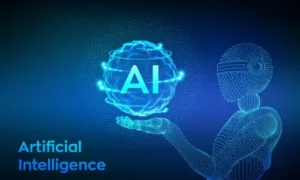
Introduction:
The Future Circular Collider (FCC) represents a groundbreaking endeavor poised to revolutionize the field of particle physics. As one of the most ambitious scientific projects of the 21st century, the FCC aims to push the boundaries of our understanding of the universe, uncovering the fundamental building blocks of matter and the forces that govern them.
Origins and Vision:
Proposed by the European Organization for Nuclear Research (CERN), the FCC builds upon the legacy of the Large Hadron Collider (LHC) and envisions a new era of discovery and exploration in particle physics. The project seeks to address unanswered questions, explore new frontiers, and pave the way for revolutionary breakthroughs in our understanding of the cosmos.
Key Components and Features:
- Collider Design: At the heart of the FCC is a massive circular particle accelerator, designed to collide protons and other particles at unprecedented energies and luminosities. The proposed circumference of the FCC exceeds 100 kilometers, dwarfing the dimensions of its predecessor, the LHC.
- High-Energy Physics: The FCC promises to delve into uncharted territories of high-energy physics, probing the fundamental forces and particles that govern the universe. By recreating conditions akin to the Big Bang, scientists aim to unravel the mysteries of dark matter, antimatter, and the Higgs boson.
- Technological Innovation: The construction and operation of the FCC necessitate cutting-edge technological advancements in accelerator design, cryogenics, superconductivity, and detector technology. Collaborative efforts among scientists, engineers, and industry partners are essential to realizing the ambitious goals of the project.
- International Collaboration: The FCC embodies the spirit of international collaboration, bringing together scientists and researchers from across the globe to tackle some of the most profound questions in particle physics. Partnerships with academic institutions, laboratories, and funding agencies ensure the success and sustainability of the project.
Scientific Objectives:
- Higgs Boson Studies: The FCC aims to shed light on the properties and interactions of the Higgs boson, the elusive particle responsible for endowing other particles with mass.
- Dark Matter and Dark Energy: Through precision measurements and particle collisions, scientists hope to unravel the mysteries of dark matter and dark energy, which constitute the majority of the universe’s mass and energy.
- Beyond the Standard Model: The FCC seeks to explore phenomena beyond the Standard Model of particle physics, including supersymmetry, extra dimensions, and new particles that may lie beyond the reach of current experiments.
- Cosmic Origins: By studying the aftermath of high-energy collisions, the FCC offers insights into the early moments of the universe’s evolution, providing clues to its cosmic origins and evolution.
Challenges and Opportunities:
The realization of the FCC presents formidable challenges, including technical complexities, financial investments, and logistical considerations. However, the potential scientific rewards and societal benefits far outweigh the challenges, with the FCC serving as a beacon of scientific excellence, innovation, and discovery.
Conclusion:
The Future Circular Collider (FCC) stands as a testament to humanity’s insatiable curiosity and quest for knowledge. With its ambitious vision, groundbreaking technology, and collaborative spirit, the FCC promises to unravel the mysteries of the universe, inspire future generations of scientists, and shape our understanding of the cosmos for years to come. As we embark on this extraordinary journey of exploration and discovery, the FCC represents a beacon of hope and optimism for the future of particle physics and humanity’s quest to unlock the secrets of the universe.







